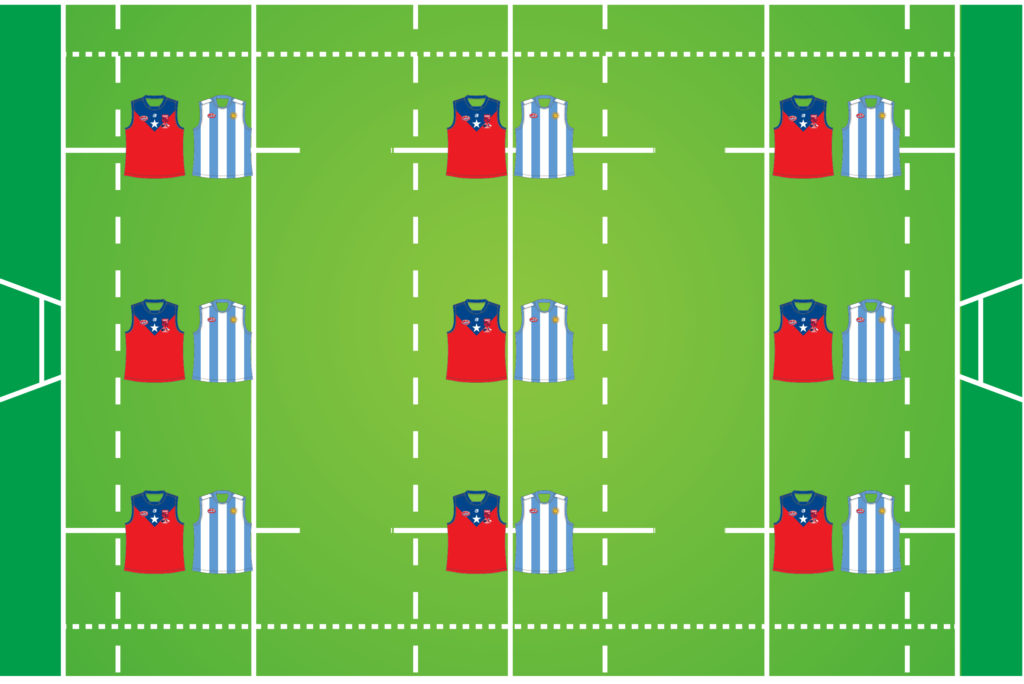Rugby 9s rules – Delve into the world of rugby 9s, a thrilling variation of the beloved sport that combines speed, skill, and strategy. With its unique rules and fast-paced gameplay, rugby 9s offers an exhilarating experience for players and spectators alike.
From the dimensions of the pitch to the intricacies of scoring, this guide provides a comprehensive overview of rugby 9s rules, ensuring you’re fully equipped to appreciate the nuances of this captivating game.
Pitch and Dimensions
The official dimensions of the rugby 9s pitch are 100 meters long and 70 meters wide, with a total area of 7,000 square meters. The pitch is divided into two halves by a halfway line, and each half is further divided into two try zones by the goal lines.
The touchlines mark the boundaries of the pitch, and the in-goal areas are located behind the goal lines.
Markings and Zones
The try zones are the areas where players score tries, and they are marked by the goal lines. The touchlines mark the boundaries of the pitch, and players must stay within the touchlines when they are in possession of the ball.
The halfway line divides the pitch into two halves, and it is used to restart play after a try or penalty is scored.
Teams and Players

Rugby 9s features two teams, each consisting of nine players on the field. The positions and roles of the players in rugby 9s are similar to those in the traditional 15-a-side game.
Positions and Roles
Each player has a specific role and position on the field, contributing to the team’s overall strategy and gameplay. Key positions include:
- Forwards:Typically larger and stronger players, responsible for securing possession and providing a platform for the backs.
- Backs:Smaller and more agile players, responsible for attacking and scoring tries.
- Scrum-half:The key playmaker, responsible for distributing the ball and directing the team’s attack.
- Fly-half:Responsible for controlling the game, coordinating the team’s attack, and kicking for goal.
Substitutions and Player Rotations
Substitutions are allowed in rugby 9s, with each team permitted to make up to seven replacements throughout the match. Substitutions can be made at any time during play, but players must leave the field before their replacement enters.Player rotations are also common in rugby 9s, with players regularly switching positions to maintain freshness and cover for injured or tired teammates.
Gameplay: Rugby 9s Rules
Rugby 9s is a fast-paced and exciting game that shares many similarities with the traditional 15-a-side version of rugby. The basic objective of the game is to score more points than the opposing team by carrying or kicking the ball over the opponent’s goal line.
Points can be scored in various ways, including tries, conversions, and penalty kicks.There are several different methods of play in rugby 9s, including running with the ball, passing, and kicking. Players can also use their bodies to tackle opponents and prevent them from advancing the ball.
Rucks, mauls, and scrums are specialized situations that occur during the game and have their own set of rules.
Rucks
A ruck occurs when a player is tackled to the ground and at least one other player from each team binds onto the tackled player. The ruck is formed when the players push against each other, trying to gain possession of the ball.
The team that wins the ruck can then continue to play the ball.
Mauls
A maul occurs when a player is tackled to the ground and at least one other player from each team binds onto the tackled player. The maul is formed when the players push against each other, trying to gain possession of the ball.
The team that wins the maul can then continue to play the ball.
Scrums
A scrum occurs when a minor infringement occurs in the game. The scrum is formed when the forwards from both teams bind together in three rows. The scrum is then pushed forward by both teams, and the team that wins the scrum can then continue to play the ball.
Scoring

In rugby 9s, scoring is crucial for determining the winner. Tries, conversions, and penalties are the three main ways to score points.
A try is worth 5 points and is scored when a player touches the ball down in the opponent’s in-goal area. A conversion is worth 2 points and is scored when a player kicks the ball through the goalposts after a try has been scored.
A penalty is worth 3 points and is awarded when the opposing team commits an infringement.
Value of Each Type of Score
Tries are the most valuable type of score as they are worth the most points. Conversions are also important as they can add extra points to a try. Penalties are less valuable than tries and conversions, but they can still be crucial in close games.
Scoring Scenarios
Here are some examples of different scoring scenarios:
- A team scores a try and converts it, resulting in a score of 7 points (5 points for the try and 2 points for the conversion).
- A team is awarded a penalty and kicks it, resulting in a score of 3 points.
- A team scores a try but misses the conversion, resulting in a score of 5 points.
Time and Duration
Rugby 9s matches are played in two halves, with each half typically lasting 7 minutes.
There is no extra time in rugby 9s, so the match ends when the clock runs out. If the scores are level at the end of regulation time, the match goes into a sudden-death period of extra time, which lasts for 5 minutes.
Stoppages in Play, Rugby 9s rules
The referee may stop play for a variety of reasons, including:
- Knock-ons
- Forward passes
- Offsides
- Penalties
When play is stopped, the referee will restart the game with a scrum, a lineout, or a penalty kick, depending on the reason for the stoppage.
Role of the Referee
The referee is responsible for managing the time and duration of the game. They will keep track of the time remaining in each half and will blow their whistle to stop play when the time runs out.
The referee will also make sure that the game is played according to the rules and will penalize any players who break the rules.
Refereeing and Fouls
The referee plays a pivotal role in ensuring the fair and safe conduct of a rugby 9s match. They enforce the rules, resolve disputes, and maintain order on the field.
Types of Fouls
Various fouls can be committed in rugby 9s, including:
- Offsides:Occurs when a player enters an offside position, such as being in front of the offside line or obstructing an opponent.
- Forward Pass:Throwing the ball forward to a teammate.
- Knock-On:Dropping the ball forward or knocking it forward with any part of the body.
- Dangerous Play:Any action that puts an opponent at risk of injury, such as late tackles or high tackles.
li> Unsportsmanlike Conduct:Behaving in a way that is not in keeping with the spirit of the game, such as dissent or foul language.
Penalties and Sanctions
The referee may impose various penalties and sanctions for fouls, including:
- Free Kick:Awarded to the non-offending team for minor infringements.
- Penalty Kick:Awarded for more serious offenses, such as dangerous play or repeated infringements.
- Yellow Card:A player is sent to the sin bin for 10 minutes for serious misconduct.
- Red Card:A player is sent off the field permanently for extreme misconduct.
Closing Notes
Whether you’re a seasoned rugby enthusiast or a curious newcomer, understanding the rules of rugby 9s unlocks a deeper appreciation for its dynamic gameplay. Embrace the fast-paced action, strategic decision-making, and camaraderie that make rugby 9s a truly captivating spectacle.
Questions Often Asked
What is the duration of a rugby 9s match?
A rugby 9s match typically consists of two halves, each lasting 7 minutes.
How many players are on a rugby 9s team?
Each team in rugby 9s consists of 9 players on the field.
What is the objective of rugby 9s?
The objective of rugby 9s is to score more points than the opposing team by grounding the ball in their try zone or kicking it through their goalposts.
